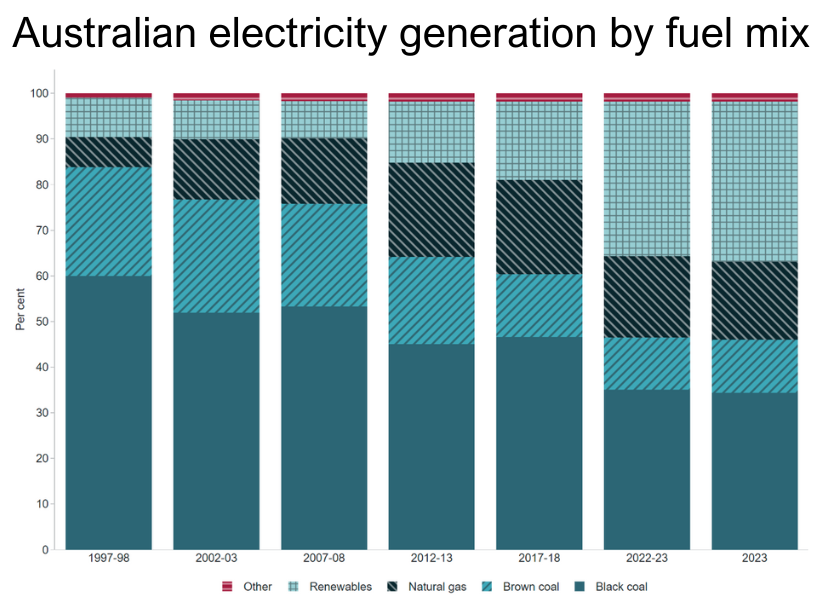Time is running out to cut emissions, and we’re already feeling the consequences.
Wild weather — such as droughts, floods and scorching heat waves — is becoming more intense, throwing ecosystems off balance, hitting economies hard and disrupting communities worldwide. Much of the problem comes from how we use land. Agriculture and deforestation alone are responsible for a third of the global greenhouse emissions increase, with deforestation adding a staggering 9 billion tonnes of CO₂ into the atmosphere every year1. If we don’t take decisive action now, we risk crossing irreversible tipping points.A game-changer, decarbonisation forces industries to rethink everything — how they use energy, how effectively they run, and how they may cut emissions without stopping development. We are all under increasing pressure to reduce our carbon impact and nations are attempting to reach net-zero emissions by 20502. But what does that really look like on the ground? And what does it take to move from intention to action?
At Beca, we understand that reducing carbon emissions is not just about compliance; it's also about being adaptable, strong and prepared for the future. This means helping clients switch to renewable energy, finding effective ways to reduce emissions and use low-carbon solutions that fit their needs. Every industry faces different challenges, and we’re here to navigate them together, turning our clients' energy ambitions into action.
What is decarbonisation?
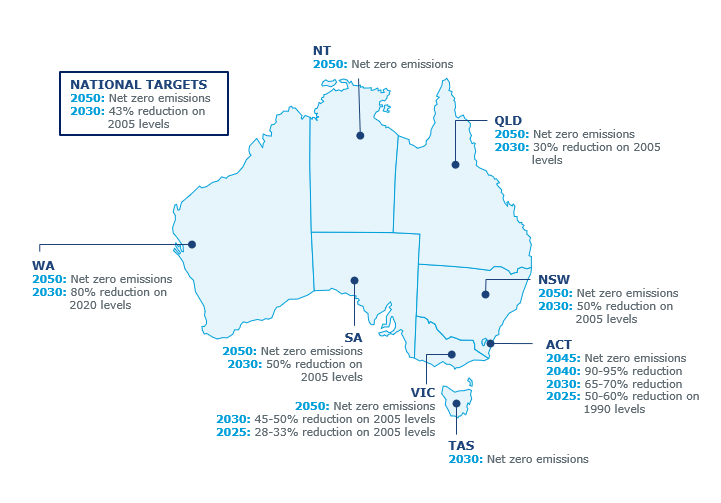
Source: Oliver Bell, LinkedIn
At its core, decarbonisation is about cutting carbon emissions from energy use and other human activities to slow down global warming. But getting there requires major shifts in how we produce and use energy.
On a global scale, decarbonisation is linked to the Paris Agreement, in which countries agreed to keep warming below 1.5°C3. To do this, carbon emissions must be reduced by 7.6% per year until 2030 — which is a steep challenge but a necessary one4. In Australia, the target is net zero emissions by 2050, with plans to decrease emissions in half by 2030 using renewable energy and low-carbon technologies5.
Decarbonisation means reshaping industries, making economies more sustainable and creating a prosperous future for businesses. The change is already taking place; whether we achieve climate neutrality in time depends on how quickly and how extensively we act.
How does decarbonisation work?
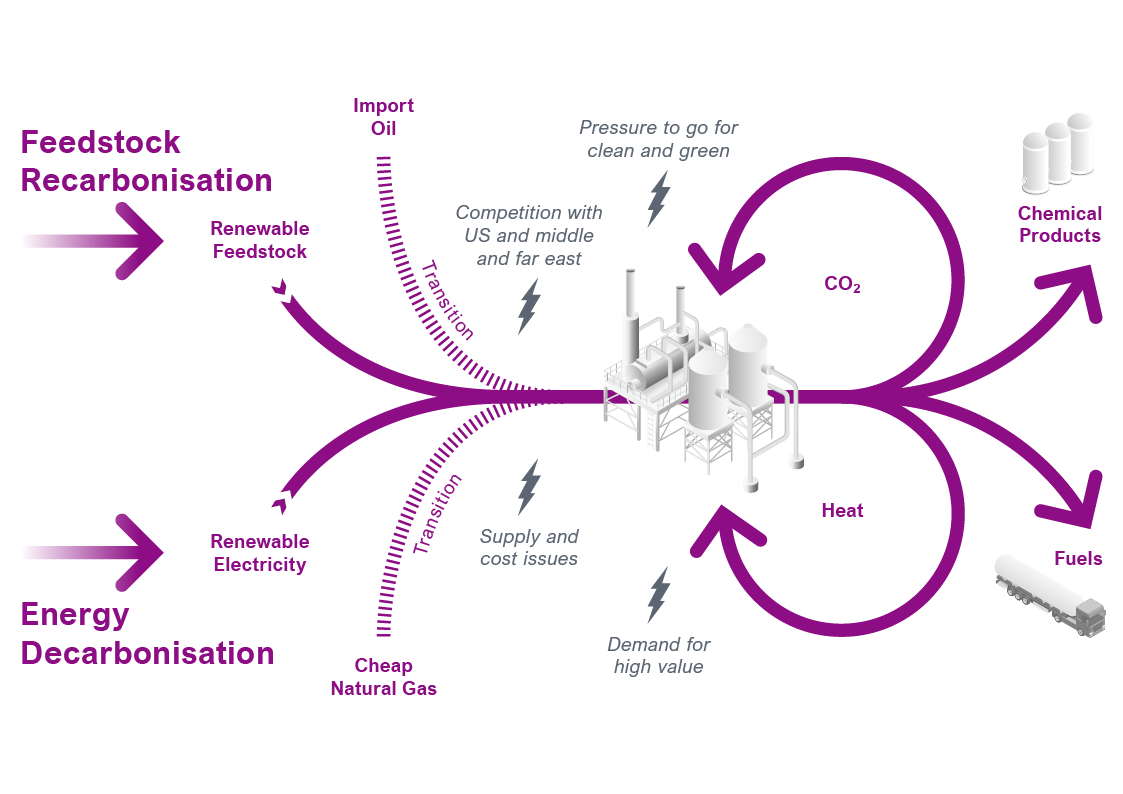
Source: Voltachem
Decarbonisation isn’t a single action — it’s a layered process that transforms how industries operate. It requires a shift in how we produce and use energy, how efficiently we run systems and how we manage emissions that can’t be avoided yet.
Some solutions, like renewable energy, are already reshaping global power systems, while others, like carbon capture, are still evolving. Together, these approaches are pushing industries toward a lower-carbon future without compromising growth and reliability.
Switching to renewable energy sources
One of the biggest drivers of decarbonisation is moving away from fossil fuels and towards renewables like wind, solar and hydropower. Unlike coal and gas, these sources don’t release carbon when generating electricity, making them a crucial part of the transition. The shift is already well underway — in 2022, nearly 30% of the world’s electricity came from renewables, and with governments pushing to triple capacity to 11 TW by 2030, that number is set to grow fast6.
A common counterargument is that renewable technologies require significant amounts of mined minerals — such as lithium, cobalt and rare earth elements — raising concerns about resource availability and environmental impact. However, research shows that the quantity of minerals needed for the energy transition is vastly smaller than the ongoing extraction of fossil fuels7. At its peak deployment, mining for low-carbon energy will still be 500 to 1,000 times lower than fossil fuel extraction, which currently stands at 15 billion tonnes per year8. Additionally, these minerals are a capital cost — once extracted, they can be recycled and repurposed, unlike fossil fuels, which require continuous extraction and combustion.
Studies confirm that the required minerals exist in sufficient supply, and with improved recycling and more efficient technologies, future demand can be met sustainably9. Meanwhile, the environmental impact of coal and oil production — ranging from air pollution to land degradation and water contamination — far outweighs the impacts of mineral mining for renewables.
Scaling renewables, however, requires more than just erecting more wind farms and solar panels. It also entails developing energy storage, grid infrastructure and transmission networks to help clean power reach the sectors in need at the right time. The challenge is immense — electricity demand is projected to double or triple, meaning we must rebuild and expand our grid in half the time it originally took10. Simultaneously, retiring fossil fuel plants remove system inertia, raising complex technical issues around grid reliability and stability that other nations mitigate with nuclear and hydro baseloads. Solving these challenges is crucial to ensuring renewables can provide consistent, secure energy at scale.
Energy efficiency improvements
One of the quickest — and cheapest — ways to reduce emissions is to use less energy in the first place. The less we waste, the less we have to generate. Businesses don’t need to rebuild entire operations to start on the journey. Typically there are cost-effective control optimisations and heat recovery opportunities before moving through to heat pumps. As our grid grows, low-cost power (relative to gas) is becoming more frequent, and this is opening up more opportunities for electrification and thermal storage. It’s possible to move with the changing grid and help encourage renewables and save costs, a win-win.This could include rethinking industrial processes to reduce power usage or incorporating smart technologies that optimise energy use in real time. In certain circumstances, minor modifications have a significant impact. Control optimisations are generally cost-effective, followed by steam and compressed air audits, as well as leak reduction. While these meausures may seem simple, they are often overlooked. Heat recovery is the next priority to assess. Businesses benefit from lower emissions and costs, making efficiency upgrades a win-win situation.
Carbon capture and storage (CCS)

Source: Corrs
For industries like steel, cement and heavy manufacturing, eliminating emissions completely isn’t yet possible. These processes release CO₂ as a direct result of chemical reactions, not just from burning fuel — which is where carbon capture and storage (CCS) steps in.
CCS captures CO₂ at its source, preventing it from escaping into the atmosphere. Once captured, the carbon can either be locked away underground in geological storage or put to use in industries like synthetic fuel production or enhanced oil recovery. It’s a way to keep emissions in check, especially for industries that can’t easily cut carbon any other way. It’s one of the few solutions that can directly reduce emissions in sectors that have no easy alternatives.
In Australia, CCS is an emerging technology, with a national goal to store 100 million tonnes of CO₂ annually by 205011. Although CCS has potential, it’s no magic fix. It takes massive investment, the right infrastructure and a smart strategy to scale it properly. On its own, it won’t solve the carbon problem — but alongside aggressive emissions cuts and cleaner energy sources, it can make a real dent. Right now, it’s still evolving and is a piece of the puzzle that needs to fit within a much bigger effort to reach net zero.
Electrification
Replacing fossil-fuel-powered systems with electric alternatives is one of the most direct ways to cut emissions. Industries that once depended on coal-fired machines, gas heating and fuel-guzzling vehicles are making the switch. More and more are moving toward electric vehicles (EVs), battery storage and grid-connected systems powered by clean energy. The impact is already being felt in key sectors like mining, heavy transport and manufacturing. In 2021, renewables accounted for 32.5% of Australia’s electricity generation, and with strong investment, that share could rise to 90% by 203012,13. But for electrification to truly drive decarbonisation, it must be paired with a cleaner energy grid — otherwise, industries are just shifting from one emissions source to another.
Decarbonisation and climate change
How we power our world is shifting — and it has to. The evidence is everywhere: without rapid emissions cuts, we’re looking at more extreme weather, rising seas, and disruptions to the ecosystems and industries that sustain us. The Paris Agreement set a clear goal: keep global warming under 1.5°C. But, meeting that target requires urgent action to slash greenhouse gas emissions before we push the planet past the point of no return.
Source: Matt Palmer
Based on 2010 levels, the IPCC has issued a clear warning, stating that carbon dioxide emissions must be lowered by 45% by 2030 if we're to avoid the most catastrophic climatic impacts14. For Australia, the urgency is even greater. Without fast global action, the country could see a 2.6°C temperature rise by 2100, leading to more bushfires, coral bleaching and coastal erosion15. The path forward isn’t just about cutting emissions — it’s about building resilience. Decarbonisation helps industries and communities adapt, protecting biodiversity, agriculture and public health from worsening climate risks.
At the same time, decarbonisation represents an opportunity. Investing in clean energy, sustainable land use and better infrastructure not only helps to reduce emissions but also improves economies, secures resources and creates a future capable of overcoming difficulties. The world is transitioning to a low-carbon future, and those who act now will be better prepared for what happens next.
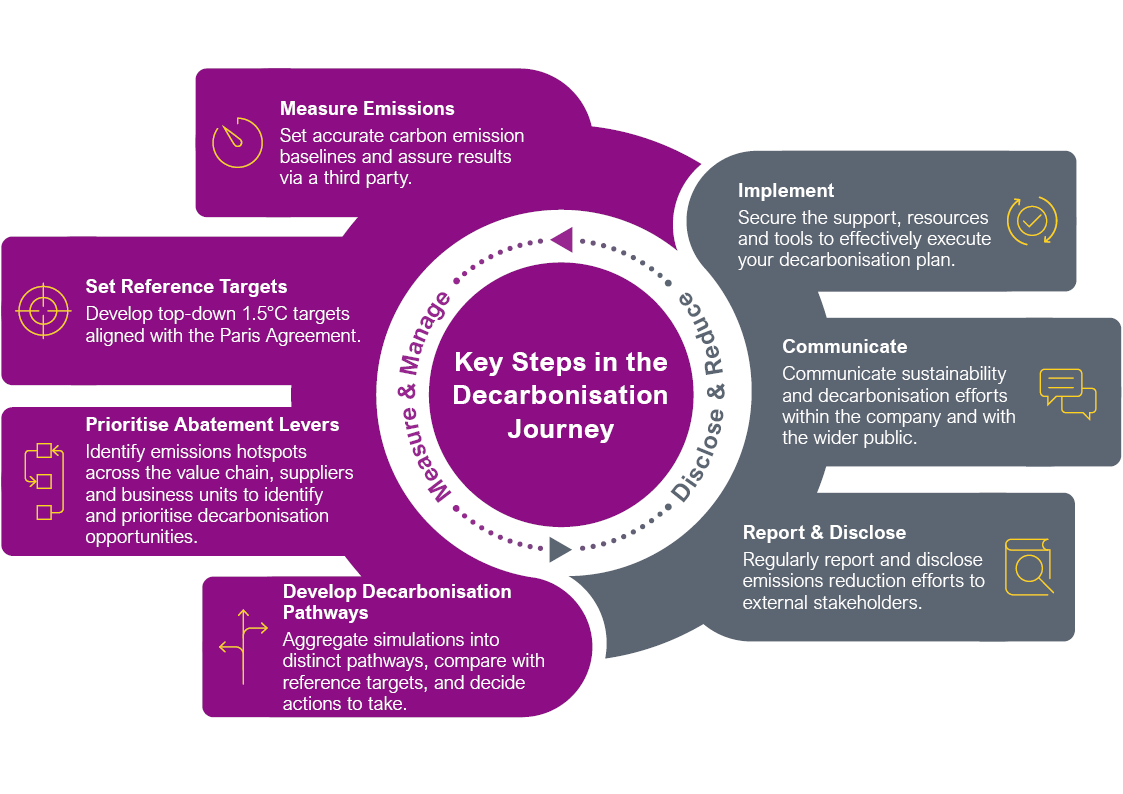
Source: Terrascope
Decarbonisation and the energy shift: Transforming heavy industries
Industries like mining, steel, cement and transport are some of the biggest carbon emitters — but they’re also among the most critical to modern economies.
Heavy industry: Rethinking steel and cement production
Steel and cement are essential materials, but their production is carbon-intensive. To lower emissions in these industries, we need to adopt hydrogen-powered steel plants, low-carbon cement methods and alternative fuels that depend less on fossil fuels. Innovation is key here — solutions that work at scale will help drive real, lasting change.
Mining: Electrification and renewables taking over
To lower its carbon footprint, Australia's mining industry is turning to renewable energy sources and electronic mining tools16. To reduce emissions while maintaining output, businesses are using solar-powered operations, energy-efficient techniques and battery-powered haul vehicles. The industry's capacity for sustainable operations will become more crucial as the demand for essential minerals rises. Australian mining operations are generally fortunate as they have access to space for solar and wind solutions, abundant sunshine and more wind than would seem intuitively available. In many ways, they are one of the best places to decarbonise. However, a key irony is the cost of gas, despite the industry's scale, remains a significant factor. In WA, the gas market structure is such that the mines have far cheaper gas than the industry on the East Coast. This is an important economic factor for jobs and competitiveness but from a macro Australian $/ton CO₂ saved perspective, it should proceed even faster.
Transport: The road to low-carbon mobility
Decarbonising long-haul transport and freight means shifting to EVs and alternative fuels like green hydrogen. Australia is already on this path — by 2040, 73% of cars and light commercial vehicles are expected to be electric, according to CSIRO17. As battery technology improves and charging infrastructure expands, clean transport solutions will become the norm, not the exception.One common concern around EVs is the mining required for battery materials like lithium, cobalt and nickel. While mineral extraction does have an environmental impact, the scale is often misunderstood. Studies show that mining for EV batteries and renewable technologies is up to 1,000 times lower than the extraction of oil, gas and coal18. Fossil fuels require continuous extraction, while minerals for batteries and renewable energy act as capital costs — investments that can be used, recycled and repurposed over time. This perspective is crucial when evaluating the long-term benefits of electrification in transport. Responsible mining practices and improved battery recycling to further reduce impacts while accelerating the transition to cleaner mobility are essential.
The shift away from fossil fuels in these industries is already happening. The challenge is scaling these solutions quickly to meet growing demand while reducing emissions.
Decarbonisation and Beca’s role in leading the energy transition
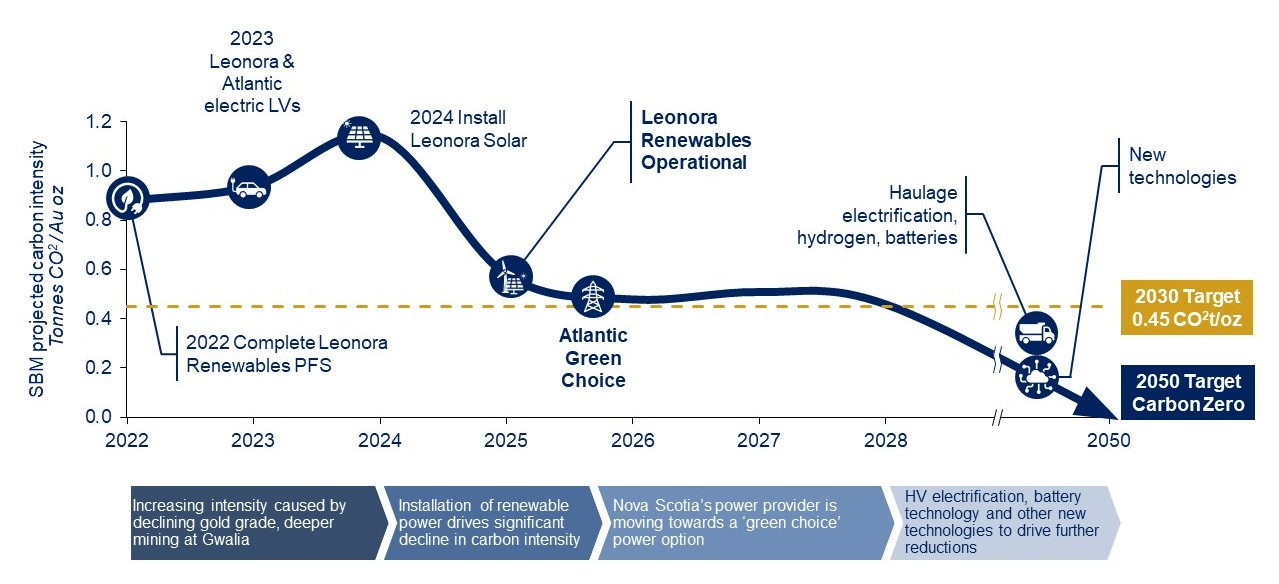
Source: Beca
At Beca, we help industries cut carbon emissions without sacrificing performance. We understand that decarbonisation isn’t just about reducing emissions — it’s about finding smarter, more sustainable practices to keep businesses running efficiently and competitively.
We work across mining, transport and heavy industry, helping businesses transition to renewable energy, sustainable fuels and modern infrastructure. Whether it’s implementing hybrid renewable systems or optimising energy efficiency, we help businesses navigate the shift to a low-carbon future, aiming for carbon neutrality — we’re here to help you with your energy journey.
Let’s make decarbonisation work for you. Get in touch to explore how Beca can support your business through the energy transition, and in planning your decarbonisation strategy.
Sources
- United Nations - Planetary boundaries: Confronting the global crisis of land degradation
- Australian Government | Australian Office of Financial Management - Australian Government Climate Change commitments, policies and programs
- United Nations - The Paris Agreement
- UNEP - Cut global emissions by 7.6 percent every year for next decade to meet 1.5°C Paris target
- Australian Government | Department of Climate Change, Energy, the Environment and Water - Powering Australia
- IRENA - Renewable energy highlights
- Sustainability by numbers - The low-carbon energy transition will need less mining than fossil fuels, even when adjusted for waste rock
- IEA - The Role of Critical Minerals in Clean Energy Transitions
- ScienceDirect - Metals beyond tomorrow: Balancing supply, demand, sustainability, substitution, and innovations
- YouTube - UNSW Institute of Industrial Decarbonisation launch and panel discussion
- Australian Government | Geoscience Australia - Australia's Energy Commodity Resources 2024, Carbon capture and storage
- APO - Clean energy Australia report 2022
- CSIRO - Electricity sector
- United Nations - Climate Plans Remain Insufficient: More Ambitious Action Needed Now
- CSIRO - Pathways to Net Zero Emissions
- The Australian Mining Review - Decarbonising the mining industry
- CSIRO - Transport
- Sustainability by numbers - Mining quantities for low-carbon energy is hundreds to thousands of times lower than mining for fossil fuels
